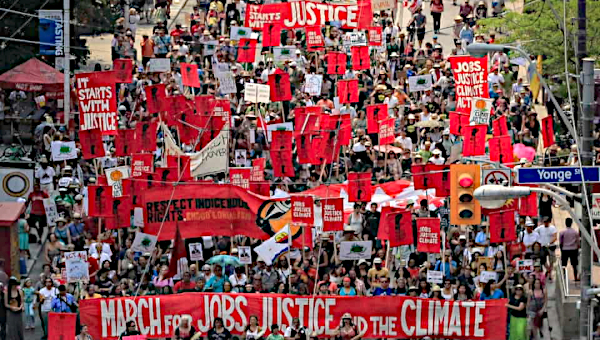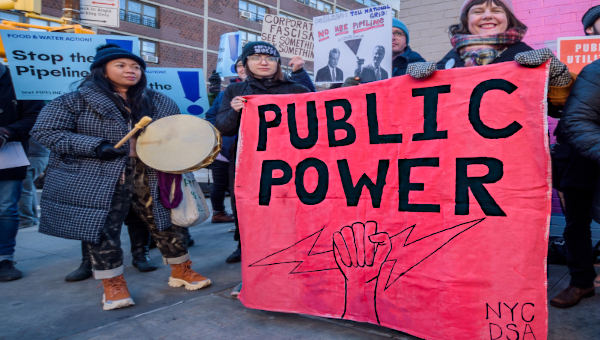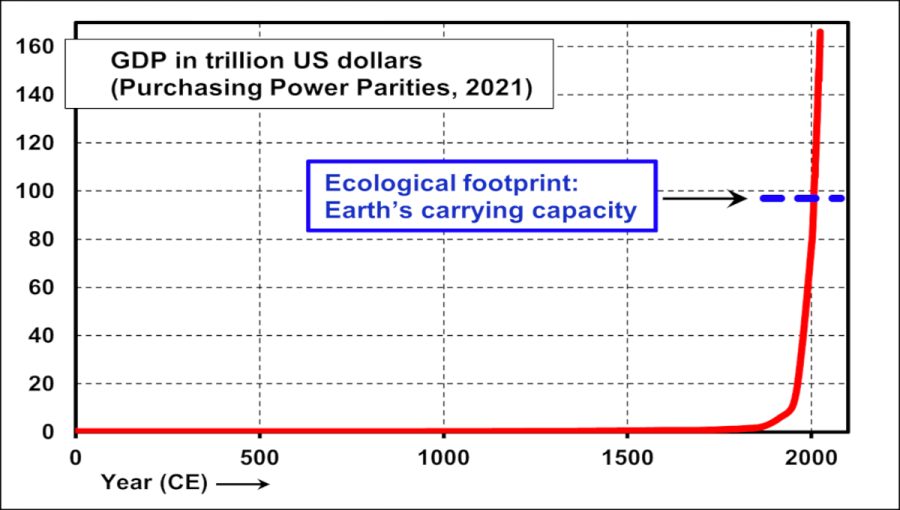The earth is on fire. If that statement sounds alarmist, it’s because you should be alarmed. Each month seems to bring new and more frightening proof of the effects of man-made climate change. But a new generation of activists is equipping itself with the cold, hard facts – and confronting the corporate arsonists who set the blaze.

Unequivocal Evidence of Climate Change
Calling the evidence of climate change “unequivocal,” the IPCC report found that “[h]uman influence has been detected in warming of the atmosphere and the ocean, in changes in the global water cycle, in reductions in snow and ice, in global mean sea level rise, and in changes in some climate extremes.” As the report’s summary concluded, “It is virtually certain that globally the troposphere has warmed since the mid-20th century,” and it is “extremely likely” that more than half of the observed increase in global average surface temperatures from 1951 to 2010 was caused by human-produced greenhouse gas activity.
Among the effects if emissions aren’t curtailed: an irreversible rise in sea levels, mass species extinction, ocean acidification, more extreme weather events, and the list goes on. To spell out just one of these effects: Using the most conservative estimates, the IPCC report predicts that sea levels could rise by three feet by the end of the 21st century if present trends continue. This would threaten New York and other low-lying cities – though less than the five-foot “worst-case scenario” predicted by some scientists.
As author and activist Chris Williams wrote in an article for Socialist Worker: “Even were we to stop emitting greenhouse gasses today, industrialized human civilization based on the burning of fossil fuels for energy has set in motion changes to the earth that are essentially irreversible and can only be measured on time scales which are difficult to comprehend.”
In its report, the IPCC for the first time recommended a “carbon budget” for the earth – a limit on the production of greenhouse gases produced by man-made methods in order to stave off the worst impacts of climate change. To keep below the 2 degree Celsius “tipping point” at which the worst effects of climate change are predicted to occur, the panel recommended that no more than 1 trillion metric tons of carbon could be burned and the resulting gases released into the atmosphere.
But according to the New York Times, “Just over a half-trillion tons have already been burned since the beginning of the Industrial Revolution, and at the rate energy consumption is growing, the trillionth ton will be burned sometime around 2040,” according to the calculations of one IPCC report author.
Today, there is an estimated 3 trillion tons of carbon still left in the ground in the form of fossil fuels. That translates into many trillions of dollars in profit for energy companies who would rather drill and frack first, and ask questions about the impact on the planet and our lives later – if ever.
As a 2012 report by the Carbon Tracker Initiative put it, “The conventional wisdom on the world’s stock markets is that all listed reserves will be exploited and burnt.”
Severe Weather
But you don’t have to read the IPCC report to come face to face with the catastrophic effects of man-made climate change. You only have to turn on the news. Recent years have seen an increase in severe weather events that many scientists say is directly linked to climate change. Alone, any one “event” isn’t necessarily evidence of climate change, but taken together, the pattern is disturbing, to say the least.
For example, late October marked the one-year anniversary of “Superstorm Sandy,” which caused severe flooding along portions of the Atlantic Coast, including New York City. One year later, many people affected by Sandy are still trying to recover.
David Robinson, New Jersey’s state climatologist, explained to NOVA some of the factors that gave Sandy its exceptional strength: “We’ve had 21 straight months of above average temperatures in New Jersey and the mid-Atlantic region. And then we’ve seen major storms. It was a year to the day before Sandy made landfall that central and northern New Jersey up into southern New England had an unprecedented October snowstorm.”
One possible culprit for these wild meteorological swings? Arctic warming may be altering the jet stream, possibly causing ordinary weather to be transformed into “extreme” events.
In September, Colorado suffered unprecedented flooding, which caused the deaths of eight people and hundreds of millions of dollars worth of damage. In four days, nearly a year’s worth of rain was dumped on parts of the state – and again, climate change was a likely factor. As 350.org’s Bill McKibbon told Democracy Now’s Amy Goodman at the time:
“We’re in mid-September. Boulder has already passed its all-time annual rainfall record, with…months and months to go in the year. The volume of water is only possible because we’ve changed the atmosphere. Warm air holds more water vapor than cold. There are these big tails of moisture coming up from the south in places where they’ve never been before. It’s eerie to watch.”
Also eerie to watch was the freak early snowstorm that hit South Dakota in October, during the government shutdown, killing up to 100,000 cattle. The autumn storm included 70-mile-an-hour winds and dumped so much rain and snow in such a shot span of time that cows and calves were suffocated and frozen to death. Some parts of the state recorded three feet of snow, quadrupling the previous record for October snowfall in South Dakota that was set more than a century ago.
At the same time, droughts and wildfires have become more intense. As the northern Midwest was recovering from the freak blizzard in the U.S., in Australia, scores of wildfires were burning in October. In the Australian state of New South Wales, 65 fires were burning on a single day in late October.
Asked by CNN’s Christiane Amanpour if there is a link between climate change and wildfires, Christiana Figueres, executive secretary of the United Nations Framework Convention on Climate Change, responded, “Yes, there is. Absolutely.” Figueres continued:
“What is absolutely clear is the science is telling us that there are increasing heat waves in Asia, Europe, and Australia; that there these will continue; that they will continue in their intensity and in their frequency. What we’ve just seen…[in Australia] is an example of what we may be looking at unless we take actually vigorous action. What we have seen are just introductions to the doom and gloom that we could be facing.”
Meanwhile, scientists are sounding the alarm about the impacts of climate change on the world’s oceans. An explosion in the jellyfish populations – caused by warming oceans and overfishing – might sound innocuous, but in the Baltic Sea, this recently forced the temporary shutdown of Sweden’s Oskarshamn nuclear power plant when jellyfish began clogging the intake pipes for cooling the world’s largest boiling-water reactor.
Nuclear power, of course, is a catastrophic threat to the environment quite apart from the effects of climate change. Two years after a near-meltdown, the nuclear crisis at Fukushima in Japan is continuing – the damaged reactors are still unstable, cleanup efforts are inadequate, and some 400 tons of radioactive water a day flows into the Pacific Ocean.
Similarly, there are the inevitable oil spills from pipelines that pollute communities across the USA. According to a recent Associated Press report, since 2012, nearly 300 “minor” oil spills have occurred in North Dakota alone, without the public being alerted. But the major ones keep happening, too. In late September, a North Dakota wheat farmer discovered an oil spill later calculated at 865,000 gallons on his land. But energy company and state officials kept quiet about it for 11 days, despite the fact that it was one of the largest inland oil pipeline spills in U.S. history.
The signs of climate change and the destruction of the environment by big business are everywhere. But the corporate rulers of the U.S. and beyond remain committed to the pursuit of profits despite these effects. They’re barreling toward climate change catastrophe – and putting their foot down on the accelerator – literally. As Chris Williams noted:
“[L]ast year, fossil fuel corporations spent $674-billion scouring the earth for new deposits of coal, oil and gas…The inexorable logic of capitalist market relations and the fixation on short-term profitability trump common sense or the physical constraints of the universe, as reported by the world’s preeminent scientific experts.”
The Logic of Capitalism
While the logic may be dictated by capitalism, it’s aided and abetted in the U.S. by the leaders of both political parties, who both remain committed to seeing the profits of U.S. oil and energy companies grow. While Republicans never miss an opportunity to declare their desire to “drill, baby, drill,” and to make the U.S. “energy independent,” seemingly by fracking, drilling and otherwise sucking every last drop of oil and gas out of the earth, Barack Obama’s supposedly environment-conscious administration has been a boom to the oil and gas industry. While Candidate Obama once pledged to institute a “windfall” tax on oil and gas companies, President Obama stayed silent about the idea – and instead is leading the charge to make the U.S. the world’s top energy producer and a net exporter of oil.
If you were wondering how the U.S. – which, with 5 per cent of the world’s population, consumes 25 per cent of global oil production – could be an energy exporter, the answer is simple: expansion of the practice of hydraulic fracturing. Despite the well-known risks of fracking, including toxic byproducts and pollution of groundwater, over 15 million American homeowners now have a natural gas or oil well within a mile of their homes, thanks largely to the fracking boom of the last several years.
The pace of the proliferation has been astonishing, as a recent Wall Street Journal report showed:
“In Johnson County, Texas, in 2000, there were fewer than 20 oil and gas wells. Only a fraction of the residents of this mostly suburban county, south of Fort Worth, lived anywhere near a well or could tell you where to find one.
“Today, more than 3,900 wells dot the county and some 99.5 per cent of its 150,000 residents live within a mile of a well. Similar transformations took place in parts of Pennsylvania, Colorado and Wyoming, according to Journal data.”
The Obama administration bears just as much responsibility for this as the Texas oil-and-gas administration run by George W. Bush. As Bill McKibben wrote about the Keystone XL pipeline:
“[D]on’t think it’s just Republican bigwigs and oil execs rushing to lend the pipeline a hand. Transcanada, the pipeline’s prospective builder, is at work as well, and Obama’s former communications director Anita Dunn is now on the Transcanada dime, producing TV ads in support of the pipeline. It’s a classic example of the kind of influence peddling that knows no partisan bounds. As the activists at Credo put it: ‘It’s a betrayal of the commitments that so many of us worked so hard for, and that Dunn herself played a huge role in shaping as top strategist on the 2008 campaign and communications director in the White House.’
“Credo’s Elijah Zarlin, who worked with Dunn back in 2008, wrote that attack on her. He was the guy who wrote all those e-mails that got so many of us coughing up money and volunteering time during Obama’s first run for the presidency, and he perfectly exemplifies those of us on the other side of this divide – the ones who actually believed Dunn in 2008, the ones who thought Obama was going to try to be a different kind of president.
“On energy there’s been precious little sign of that. Yes, the Environmental Protection Agency has put in place some new power plant regulations, and cars are getting better mileage. But the president has also boasted again and again about his ‘all of the above’ energy policy for ‘increasing domestic oil production and reducing our dependence on foreign oil’.”
But in the midst of so much bad news about the environment, there is hope as well – in the form of an increasingly dynamic environmental movement, often led by young activists, that is connecting ecological struggles with a commitment to social justice and a focus on the global system that produces environmental devastation in the first place.
Struggles against fracking – in communities across Canada and the U.S. – have taken on a new importance in recent years. The movement has also put a particular emphasis on fighting the completion of TransCanada’s Keystone XL pipeline project to carry tar sands oil from Western Canada to the U.S. Gulf Coast.
Two years on, the Obama administration has still not green-lighted the final portion of the project – no doubt the main reason why is the concerted efforts of activists and ongoing protests across Canada and the USA. In October, the heroic struggle by First Nations people and environmental activists in Canada to protect their lands from the frackers took center stage.
The urgency of the struggles against fracking and other issues grow out of immediate threats to the environment. But activists are also drawing connections between the various fronts in the battle to protect the planet – struggles for ecological justice in particular and for social justice in general.
At the recent PowerShift conference held in Pittsburgh, for example, student activists representing more than more than 720 campuses attended meetings on such topics as “Capitalism, Climate and Injustice” – where the connections between environmental devastation and imperialism were made.
There is also a new emphasis on highlighting how oppressed communities are specially impacted by pollution and environmental racism. Plus, activists – borrowing a tactic from anti-apartheid struggles of the 1980s and today’s BDS campaign against Israeli apartheid – are strategizing about ecological divestment campaigns.
“When universities are investing in fossil fuel companies that are fueling climate change and are destroying the planet – that’s almost a slap in the face,” Jasmine Ruddy, a student at the University of North Carolina at Chapel Hill and activist in a campus divestment campaign, told USA Today. “They’re saying ‘We don’t care about your future’.”
More and more, this generation of activists is willing to challenge the politicians of both parties who enable the corporate polluters – and to question a system in which “growth” is predicated on the destruction of the environment. As Chris Williams said in a presentation at the EcoSocialist conference in Los Angeles in September:
“It is increasingly clear to a growing number of people that the ecological crisis is a direct outgrowth of the operation of our economic system; namely, capitalism. The crisis has many facets: environmental racism, energy production, pollution, gender oppression, biodiversity loss, agribusiness and climate change to name only a few. But they can all be traced back to a singular cause: the relentless pursuit of profit and the accumulation of capital.” •
This article first appeared at Socialist Worker.





